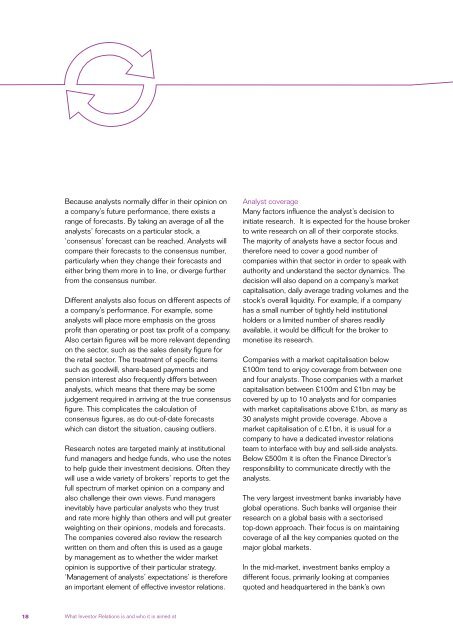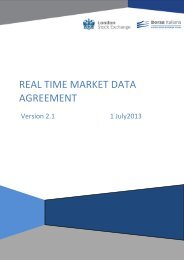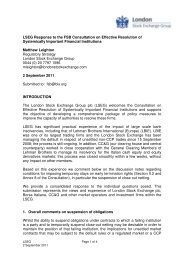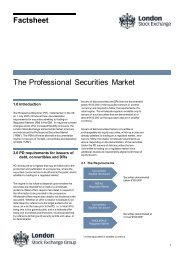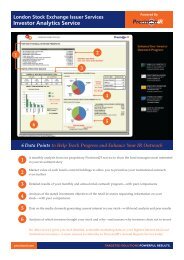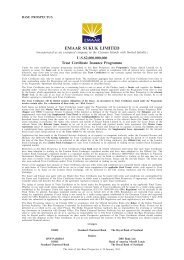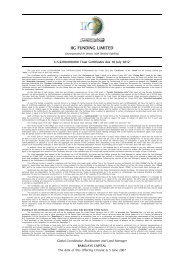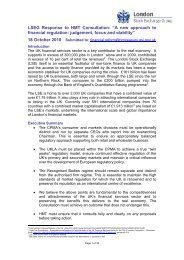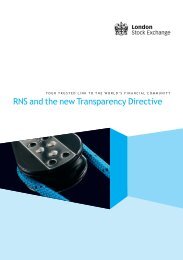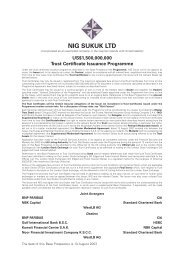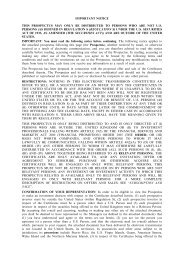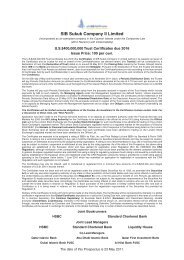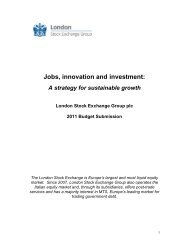Investor Relations - A Practical Guide - Investis
Investor Relations - A Practical Guide - Investis
Investor Relations - A Practical Guide - Investis
Create successful ePaper yourself
Turn your PDF publications into a flip-book with our unique Google optimized e-Paper software.
Because analysts normally differ in their opinion on<br />
a company’s future performance, there exists a<br />
range of forecasts. By taking an average of all the<br />
analysts’ forecasts on a particular stock, a<br />
‘consensus’ forecast can be reached. Analysts will<br />
compare their forecasts to the consensus number,<br />
particularly when they change their forecasts and<br />
either bring them more in to line, or diverge further<br />
from the consensus number.<br />
Different analysts also focus on different aspects of<br />
a company’s performance. For example, some<br />
analysts will place more emphasis on the gross<br />
profit than operating or post tax profit of a company.<br />
Also certain figures will be more relevant depending<br />
on the sector, such as the sales density figure for<br />
the retail sector. The treatment of specific items<br />
such as goodwill, share-based payments and<br />
pension interest also frequently differs between<br />
analysts, which means that there may be some<br />
judgement required in arriving at the true consensus<br />
figure. This complicates the calculation of<br />
consensus figures, as do out-of-date forecasts<br />
which can distort the situation, causing outliers.<br />
Research notes are targeted mainly at institutional<br />
fund managers and hedge funds, who use the notes<br />
to help guide their investment decisions. Often they<br />
will use a wide variety of brokers’ reports to get the<br />
full spectrum of market opinion on a company and<br />
also challenge their own views. Fund managers<br />
inevitably have particular analysts who they trust<br />
and rate more highly than others and will put greater<br />
weighting on their opinions, models and forecasts.<br />
The companies covered also review the research<br />
written on them and often this is used as a gauge<br />
by management as to whether the wider market<br />
opinion is supportive of their particular strategy.<br />
‘Management of analysts’ expectations’ is therefore<br />
an important element of effective investor relations.<br />
Analyst coverage<br />
Many factors influence the analyst’s decision to<br />
initiate research. It is expected for the house broker<br />
to write research on all of their corporate stocks.<br />
The majority of analysts have a sector focus and<br />
therefore need to cover a good number of<br />
companies within that sector in order to speak with<br />
authority and understand the sector dynamics. The<br />
decision will also depend on a company’s market<br />
capitalisation, daily average trading volumes and the<br />
stock’s overall liquidity. For example, if a company<br />
has a small number of tightly held institutional<br />
holders or a limited number of shares readily<br />
available, it would be difficult for the broker to<br />
monetise its research.<br />
Companies with a market capitalisation below<br />
£100m tend to enjoy coverage from between one<br />
and four analysts. Those companies with a market<br />
capitalisation between £100m and £1bn may be<br />
covered by up to 10 analysts and for companies<br />
with market capitalisations above £1bn, as many as<br />
30 analysts might provide coverage. Above a<br />
market capitalisation of c.£1bn, it is usual for a<br />
company to have a dedicated investor relations<br />
team to interface with buy and sell-side analysts.<br />
Below £500m it is often the Finance Director’s<br />
responsibility to communicate directly with the<br />
analysts.<br />
The very largest investment banks invariably have<br />
global operations. Such banks will organise their<br />
research on a global basis with a sectorised<br />
top-down approach. Their focus is on maintaining<br />
coverage of all the key companies quoted on the<br />
major global markets.<br />
In the mid-market, investment banks employ a<br />
different focus, primarily looking at companies<br />
quoted and headquartered in the bank’s own<br />
18<br />
What <strong>Investor</strong> <strong>Relations</strong> is and who it is aimed at


